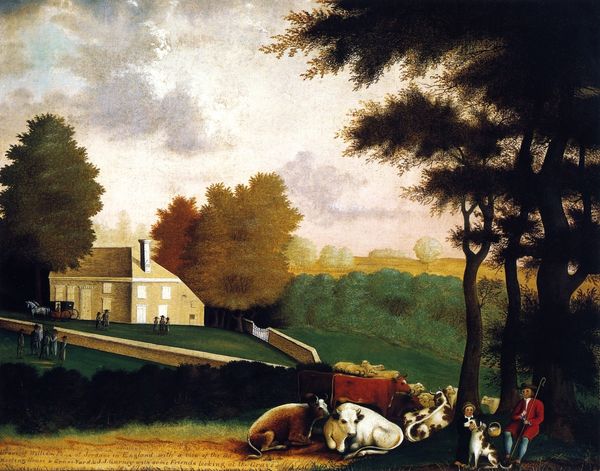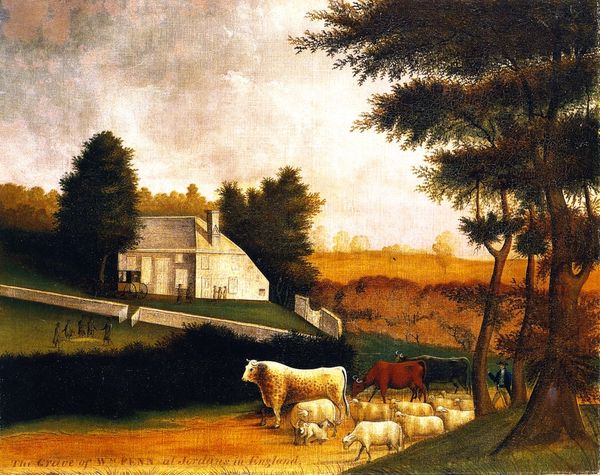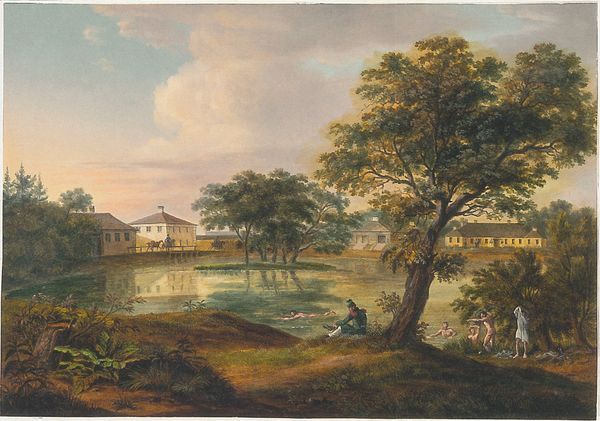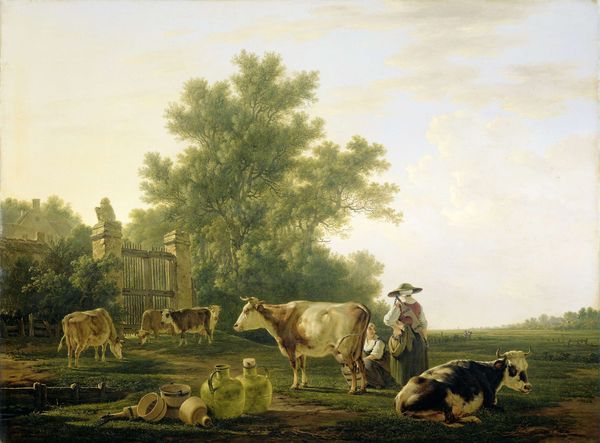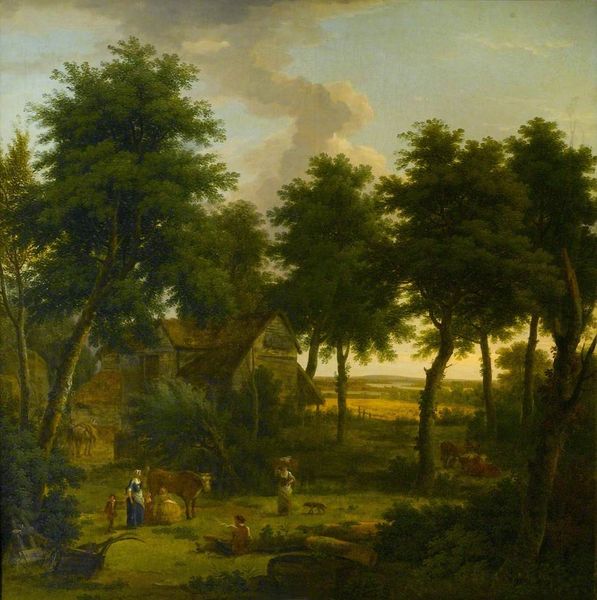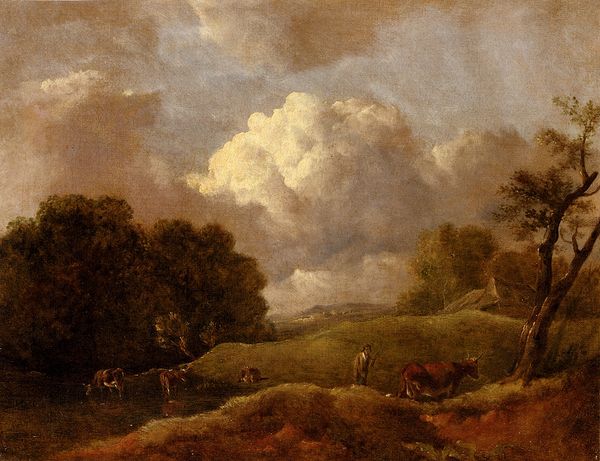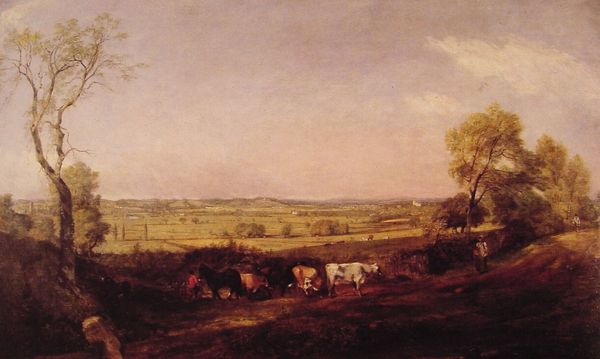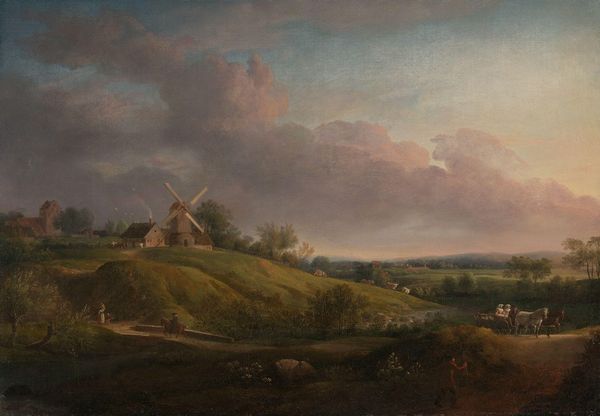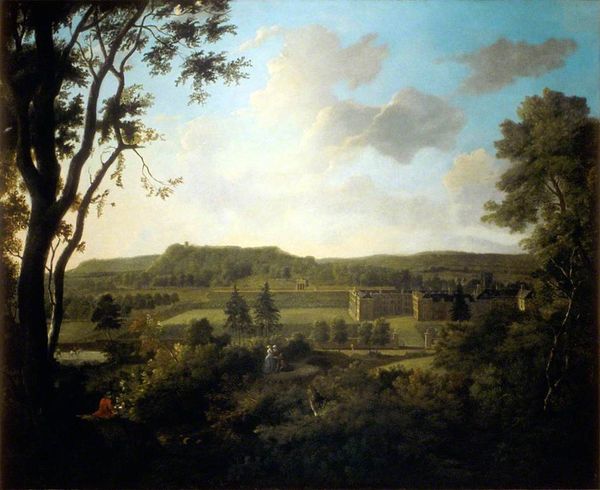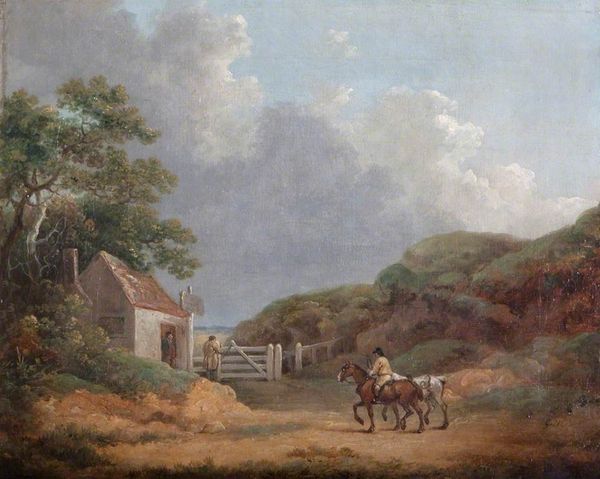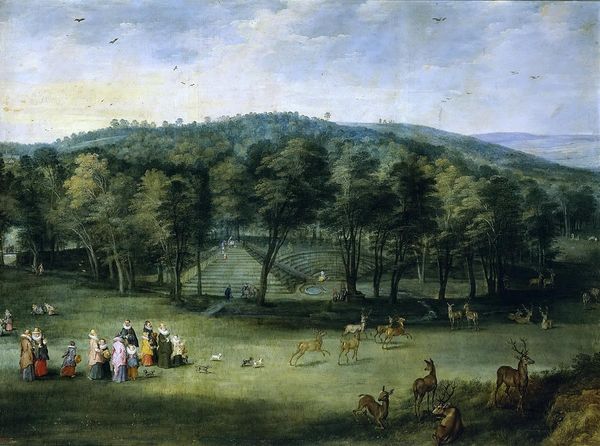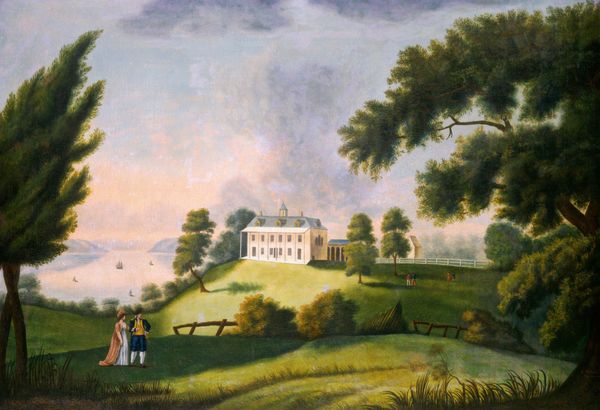
painting, oil-paint
#
painting
#
oil-paint
#
landscape
#
oil painting
#
genre-painting
#
realism
Copyright: Public domain
Edward Hicks's painting, The Grave of William Penn, presents a pastoral scene in which the architecture and open fields create a sense of depth. The composition, a mix of cultivated and wild elements, is divided by a diagonal line, from left to right that directs the eye from Penn’s house to the grazing cattle. The subdued palette of browns, greens, and creams lends a sense of harmony and nostalgia. The painting’s formal structure reflects Hicks's Quaker beliefs, where simplicity and inner light are valued. The juxtaposition of Penn's estate, a symbol of order and civilization, with the wilder landscape populated by animals may explore the relationship between humanity and nature. Hicks seems to use Penn's grave as a starting point to explore themes of legacy and stewardship. Note the interplay between the constructed order of the house and the organic arrangement of the natural world. How does this arrangement invite us to consider Penn's legacy within the broader context of American history and landscape? As a painting, "The Grave of William Penn" does not offer a conclusive statement, but rather an invitation to contemplate these complex relationships.
Comments
No comments
Be the first to comment and join the conversation on the ultimate creative platform.
